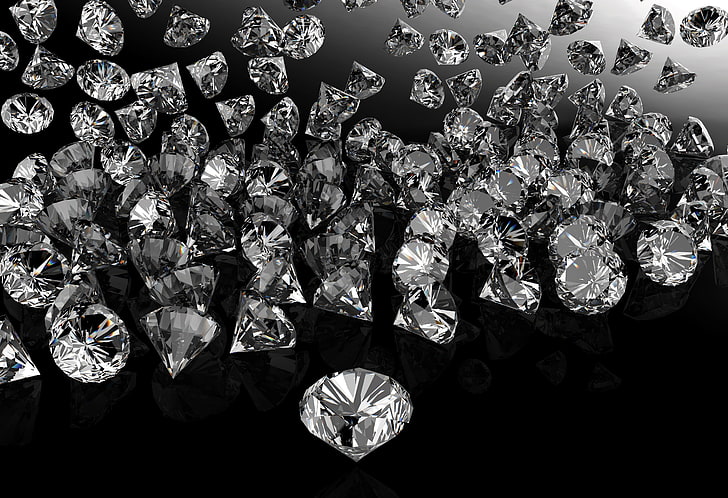With regards to picking the ideal setting for your platinum vs gold lab grown diamond rings, the discussion among platinum and gold is a critical one. The two metals offer interesting benefits and can significantly impact the general appearance and sturdiness of your ring. This article digs into the vital contrasts among platinum and gold settings for lab-grown diamonds, assisting you with settling on an informed choice.
Understanding Lab-Grown Diamonds
Before jumping into the points of interest of platinum and gold, it’s important to understand what lab-grown diamonds are. Lab-grown diamonds are real diamonds created in a controlled climate, impersonating the normal circumstances that form diamonds underground. These diamonds offer a similar physical, compound, and optical properties as mined diamonds yet are often more affordable and harmless to the ecosystem.
Why Pick Lab-Grown Diamonds?
Lab-grown diamonds accompany a few advantages:
Savvy: They are ordinarily 20-40% more affordable than mined diamonds.
Moral Decision: They stay away from the moral issues connected with struggle diamonds.
Natural Effect: They have a lower ecological impression compared to customary mining.
Platinum vs Gold: The Fundamentals
What is Platinum?
Platinum is a thick, pliant, and corrosion-safe metal known for its toughness and brilliant appearance. It is a famous decision for fine gems because of its normal white color, which upgrades the brightness of diamonds. Platinum’s unique case and weight additionally add to its exceptional valuing.
What is Gold?
Gold, an immortal and exemplary metal, is available in different colors like yellow, white, and rose. It is softer than platinum, making it simpler to work with and more flexible for making complicated plans. Gold’s worth is affected its immaculateness, estimated in karats (e.g., 14K, 18K).
Looking at Platinum and Gold Settings for Lab-Grown Diamonds
Solidness and Strength
Platinum:
Platinum is eminent for its extraordinary toughness. It is a thick metal, making it exceptionally impervious to scratching and discoloring. This pursues it a great decision for ordinary wear, as it keeps up with its appearance and safeguards the diamond really. Over the long haul, platinum fosters a patina, which many track down adds to its personality.
Gold:
Gold, while additionally tough, is softer than platinum. 18K gold (which is 75% unadulterated gold) is more impervious to scratches compared to 14K gold, yet it actually may require more regular upkeep. Gold can likewise be inclined to discoloring and may require occasional cleaning to restore its sparkle.
Appearance and Color
Platinum:
Platinum’s regular white color supplements the brightness of lab-grown diamonds, pursuing it a well known decision for the individuals who lean toward a work of art and downplayed look. Its color is more intelligent, which improves the diamond’s radiance.
Gold:
Gold offers various colors, each influencing the presence of the lab-grown diamond in an unexpected way. Yellow gold gives a warm, conventional look, while white gold (which is often alloyed with palladium or nickel) mirrors the presence of platinum however may require rhodium plating to keep up with its sparkle. Rose gold, with its pinkish tone, adds an exceptional and romantic touch.
Upkeep and Care
Platinum:
Platinum requires insignificant upkeep. It is normally hypoallergenic and doesn’t require ordinary replating. Be that as it may, it can foster a patina over the long haul, which certain individuals like, while others might decide to have it cleaned to restore its original shine.
Gold:
Gold settings, particularly white gold, may require customary rhodium plating to keep up with their splendid appearance. Rose and yellow gold require intermittent cleaning to eliminate scratches and restore their sparkle. Also, gold can be more inclined to losing its shape over the long haul, particularly in more many-sided plans.
Cost
Platinum:
Platinum is for the most part more costly than gold because of its unique case and thickness. The expense mirrors its quality and strength, pursuing it an exceptional decision for those able to invest in a durable and great setting.
Gold:
Gold is more affordable and offers a scope of sticker costs relying upon its virtue and the sort of gold. 14K gold is more affordable than 18K gold, making it a more spending plan cordial choice while as yet giving a wonderful setting to lab created diamonds.
Picking the Right Metal for Your Lab-Grown Diamond Ring
While choosing among platinum and gold for your lab-grown diamond ring, think about the accompanying factors:
Way of life: Assuming you lead a functioning way of life or have some work that subjects your ring to mileage, platinum’s strength might be the better decision.
Esthetic Inclination: Pick gold in the event that you lean toward its color choices and customary allure. Settle on platinum on the off chance that you need a work of art and immortal look.
Financial plan: Decide your financial plan and consider what the expense of platinum versus gold will mean for your general decision.
Conclusion
Both platinum and gold offer unmistakable benefits for lab-grown diamond rings. Platinum’s solidness and exemplary allure settle on it a superior decision, while gold’s flexibility and affordability give a scope of choices to suit various inclinations and spending plans. Eventually, the decision among platinum and gold ought to mirror your own style, way of life, and monetary contemplations. Whichever metal you pick, your lab-grown diamond ring will without a doubt sparkle splendidly.



